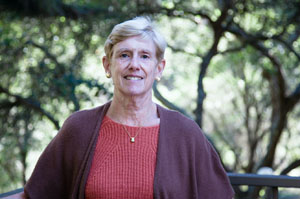UC Santa Cruz has an impressive record in data-intensive research areas, from genomics and computer gaming to digital arts and new media. This work has brought the campus great distinction, but it has taxed our computing infrastructure. I'm happy to report that relief is on the way.
A new $500,000 grant from the National Science Foundation is allowing Information Technology Services to improve service by establishing a dedicated research network. This new environment, called a Science Demilitarized Zone (DMZ), sets aside part of the campus network for the exclusive use of researchers.
Currently, research projects are attached to the general campus production network and must compete with all other campus network traffic. The DMZ will be a vast improvement.
Accessing and sharing so-called "big data," like that produced and used by campus researchers, requires a faster, more robust, and more flexible network. Our new network will create dedicated Internet "fast lane" circuits to route research traffic around ordinary traffic. It will require sophisticated monitoring for performance and security purposes, enhancements to a number of buildings on campus where network bottlenecks exist today, and the ability to quickly reroute network traffic to improve data transfer speeds as slowdowns occur. But the benefits will be worth the effort, as research units experience improved data flow.
We tend to hear a lot about data-intensive projects in engineering, including the campus's highly regarded work in genomics and the work of the Santa Cruz Institute for Particle Physics (SCIPP). But there is data-rich research happening in all of our academic divisions. Scotty Brookie, director of ITS for the Arts Division, highlighted some of the need for high-performance networking in the Arts:
• In Film and Digital Media, greater network capabilities will open up vibrant new areas of inquiry by making archival footage -- early documentaries, educational films, home movies, silent films -- available for scholarly sharing and critical analysis.
• In Digital Arts and New Media, Professor Sharon Daniel anticipates that higher bandwidth will enable the campus to host large datasets, expanding access to communities that don't have the same networking capacity.
• Conversations are also underway to create virtual shared spaces with partner institutions to allow digital media students to "hang out," collaborate, and perform with their peers in other parts of the world.
• Similarly, Theater Arts Professor Ted Warburton will be able to continue his pioneering work in multi-venue dance and theater productions, using high-speed networking to link performers in local and remote sites.
• In Art, Associate Professor Jennifer Parker has for several years used real-time environmental data from remote sensors to drive art installations, converting data into sound and light; for Parker, greater bandwidth means the possibility of a more immersive and data-rich experience.
The enhanced research network environment will extend the value of UCSC research by delivering more capacity to meet the growing needs of our research community.
Researchers will benefit from faster, more robust network connectivity



